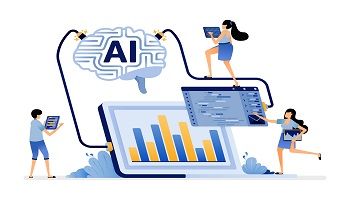How Generative-AI Can Help Modernize Your Legacy Software
Legacy applications, those trusty workhorses that have powered your business for years, can start to resemble a classic car. They might be reliable, but they lack the sleek design and efficiency of newer models. Maintaining them can be expensive, and they often struggle to keep pace with evolving security threats and changing business needs. A study found that 70% of enterprises still grapple with legacy applications, hindering their ability to innovate and adapt. But unlike a car you can trade in, replacing these applications entirely can be a costly and disruptive endeavor.
Here’s where Generative AI swoops in, offering a revolutionary approach to legacy system modernization. Imagine a tool that can analyze your aging codebase, understand its functionality, and then generate modern, efficient code that replicates its core functionality. That’s the magic of Generative AI!

7 Warning Signs Your Legacy Software Needs Modernization (and How Generative AI Can Help)
1. Frequent System Crashes and Performance Issues: Legacy software, built with older technologies, might struggle with increased data volumes and user traffic. This can lead to frequent crashes, slow loading times, and a frustrating user experience.
Role of Generative AI: It can analyze code bottlenecks and suggest optimizations to improve performance. It can also help identify areas for code modernization to handle larger datasets efficiently.
2. Security Vulnerabilities: Outdated coding practices and unpatched vulnerabilities can leave your legacy software exposed to cyberattacks. This puts your company data and customer information at risk.
Role of Generative AI: It can analyze code for known vulnerabilities and suggest potential fixes. It can also help developers stay up-to-date on security best practices by generating code that adheres to secure coding standards.
3. Incompatibility with Modern Systems and Devices: Legacy applications might not integrate well with newer software and hardware, creating data silos and hindering operational efficiency.
Role of Generative AI: It can analyze APIs and suggest code modifications or generation for seamless integration with modern software development. This allows your legacy application to communicate and exchange data effectively.\
4. High Maintenance Costs: Maintaining legacy software can be a significant drain on resources. Bug fixes, code updates, and compatibility issues can require a dedicated team of developers with specialized knowledge of the aging codebase.
Role of Generative AI: It can automate tasks like code documentation and code refactoring. This reduces the need for manual maintenance and frees up developers to focus on more strategic initiatives.
5. Lack of Features and Functionality: Legacy applications might lack the features and functionalities of modern software, hindering your ability to compete and meet evolving customer needs.
Role of Generative AI: It can analyze user interactions and suggest improvements to the UI/UX. It can also generate code snippets for modern UI frameworks, allowing developers to create a fresh and user-friendly experience.
6. Difficulty in Finding Developers with Legacy Expertise: As technology advances, developers with expertise in older programming languages and frameworks become scarce. This can make it challenging to find qualified personnel to maintain and update your legacy application.
Role of Generative AI: It can bridge the knowledge gap by automatically generating code that replicates the core functionality of the legacy application. This allows developers with modern skill sets to contribute to the modernization process.
7. Limited Scalability: Legacy applications might not be able to scale to accommodate future growth or increased demand. This can stifle your business potential and hinder your ability to expand.
Role of Generative AI: It can analyze code for scalability bottlenecks and suggest optimizations. It can also generate code for integrating with cloud platforms that offer greater flexibility and scalability.
Advertisement
Step-by-Step Process to Modernize Legacy Software with Generative AI
Step 1: Identify Target Applications:
Begin by prioritizing which legacy applications require modernization the most. Focus on systems critical to business operations or those causing significant pain points.
Step 2: Inventory and Analyze Existing Systems:
Document your current technology stack, including programming languages, frameworks, and databases used by the legacy application. Analyze the codebase to understand its functionality and identify areas for improvement.
Step 3: Code Refactoring and Optimization:
Utilize GenAI tools to analyze the codebase and suggest automated refactoring options. This can involve removing redundant code, improving code readability, and optimizing for performance.
Step 4: Modern UI/UX Design:
Use GenAI to analyze user interactions and data to identify opportunities for improving the user interface and user experience. Generate code snippets or mockups for a modern and intuitive design.
Step 5: Incremental Modernization:
Modernize the legacy application in phases to minimize disruption and risk. Start with smaller, less critical functionalities and gradually work your way towards core components.
Step 6: Continuous Integration and Delivery (CI/CD):
Implement a CI/CD pipeline to automate code testing and deployment. This ensures rapid integration of GenAI-generated code with minimal errors.
Step 7: Monitoring and Performance Analysis:
Continuously monitor the performance of the modernized application and address any potential issues promptly. Utilize AI-powered monitoring tools for proactive problem identification.




